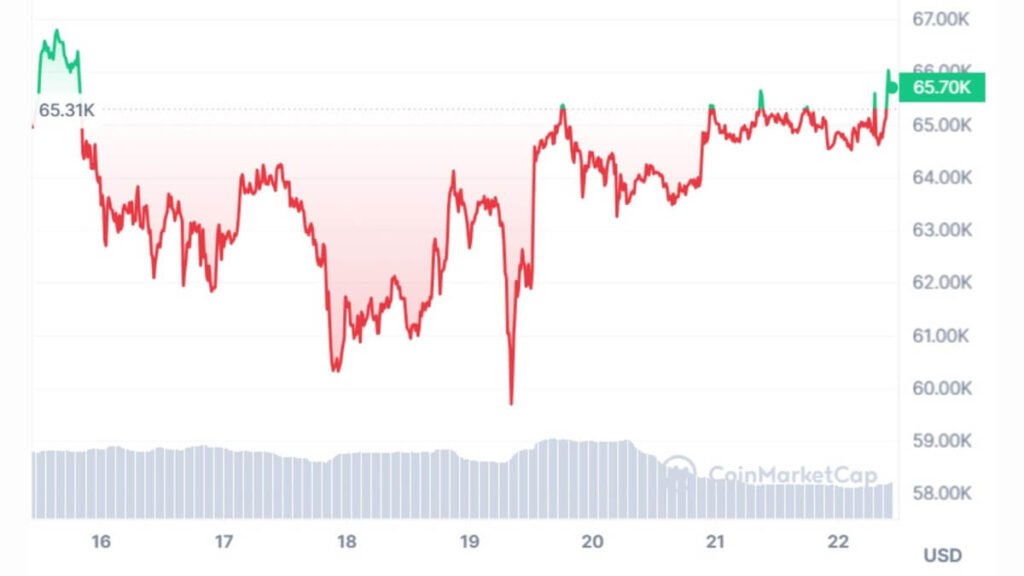Bitcoin has rebounded to $66,000 after its fourth halving as bulls aim for $100,000 milestone.

The Bitcoin network held its latest halving event shortly after 12:09 AM (UTC) on April 19. Bitcoin network halving events, a phenomenon deeply ingrained in cryptocurrency design, not only reduce the rate at which new Bitcoins enter the market, but have historically been a precursor to significant price fluctuations.
Bitcoin saw high volatility in the week leading up to the halving. The price soared to a high of around $65,310 before falling below $60,000 in the aftermath of the halving. This is a stark contrast to the $63,000 price tag just hours before the event. The move is emblematic of the speculative trading strategy often used around the halving, where traders attempt to preempt the market’s reaction.
Despite the initial slump, the price of Bitcoin rebounded to $65,000 within a day, and at the time of writing this report was trading around $66,000, surpassing pre-halving levels. This recovery, along with the overall price upward trajectory, indicates stabilization in markets adjusting to reduced supply inflows, suggesting that the initial decline was more of a knee-jerk reaction than a sustained recession.

“If we observe previous cycles, we can witness a notable decline in BTC dominance, with a surge in interest and investment in altcoins within 12-18 months after the halving,” emphasized Shivam Thakral, CEO of BuyUcoin. He also noted the importance of regulatory developments, such as the approval of Bitcoin and Ethereum ETFs in Hong Kong, marking a pivotal moment in institutional adoption and potentially strengthening Bitcoin’s market position.
The halving will reduce the block reward for miners from 6.25 Bitcoin to 3.125 Bitcoin, reducing profitability and increasing competition among miners while also potentially increasing transaction fees as an alternative revenue source. The recent halving saw an unusual spike in transaction fees within halving blocks mined by ViaBTC, which earned over $2.6 million in rewards, a significant increase compared to pre-halving blocks.
Market resilience in the face of macroeconomic uncertainties, including inflation and interest rate concerns, continues to generate optimism among investors.
Bitget’s Jyotsna Hirdyani noted that despite a potential near-term market downturn due to broader economic factors, Bitcoin’s trajectory could see it reach a new all-time high of $100,000 within the next 10 to 18 months.
However, some financial analysts remain cautious. Experts from JPMorgan and Deutsche Bank suggested that the impact of this halving was greatly anticipated and is already reflected in Bitcoin’s current price. They argue that significant price gains following the halving may be muted compared to previous cycles, given the existing high bar established by recent ETF-led demand.
Kraken’s Thomas Perfumo points to the symbolic significance of this halving amid global financial instability, describing Bitcoin as an alternative to “apolitical, unwavering monetary policy” at a time when trust in traditional currencies is fluctuating. I did.
As the Bitcoin network continues to mature, the implications of a halving event go beyond simple price adjustments. This highlights the evolving dynamics of supply and demand, the regulatory environment, and the broader economic environment in which cryptocurrencies operate. Going forward, a mix of declining supply growth, increasing institutional interest, and innovative financial products such as ETFs will determine Bitcoin’s path in the ever-evolving cryptocurrency market landscape.
Also Read: Bitcoin ETF Marks the Beginning of Bitcoin’s Second Era



